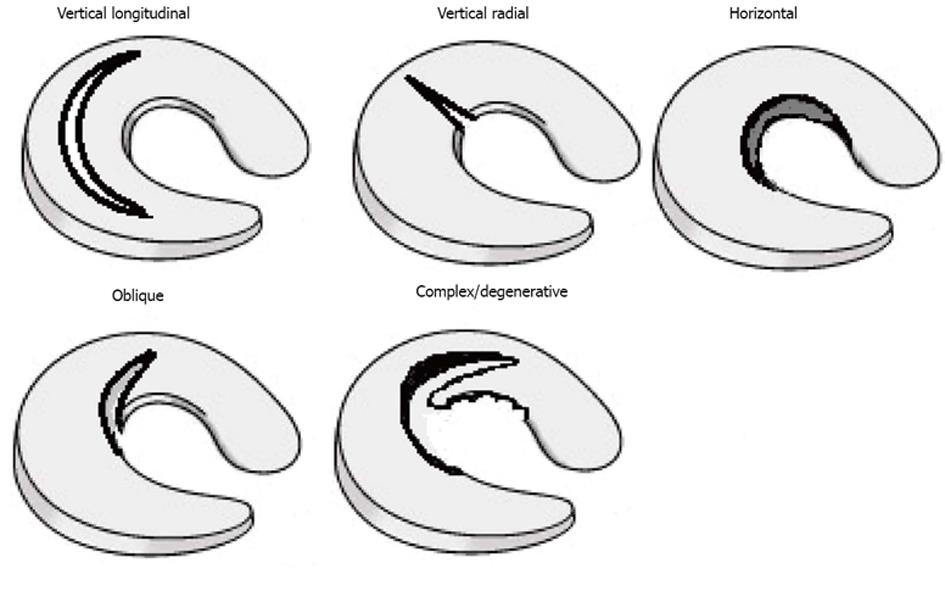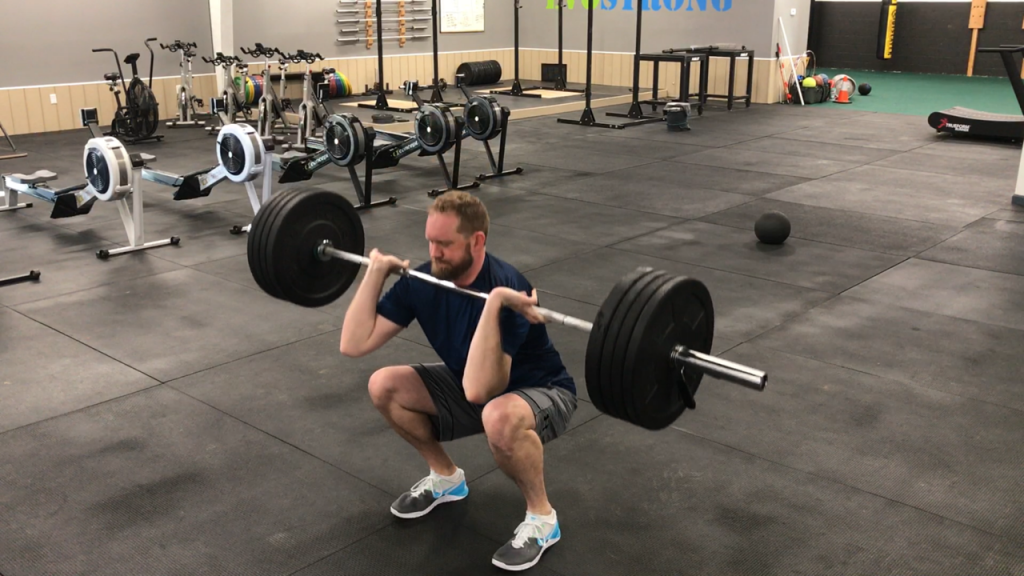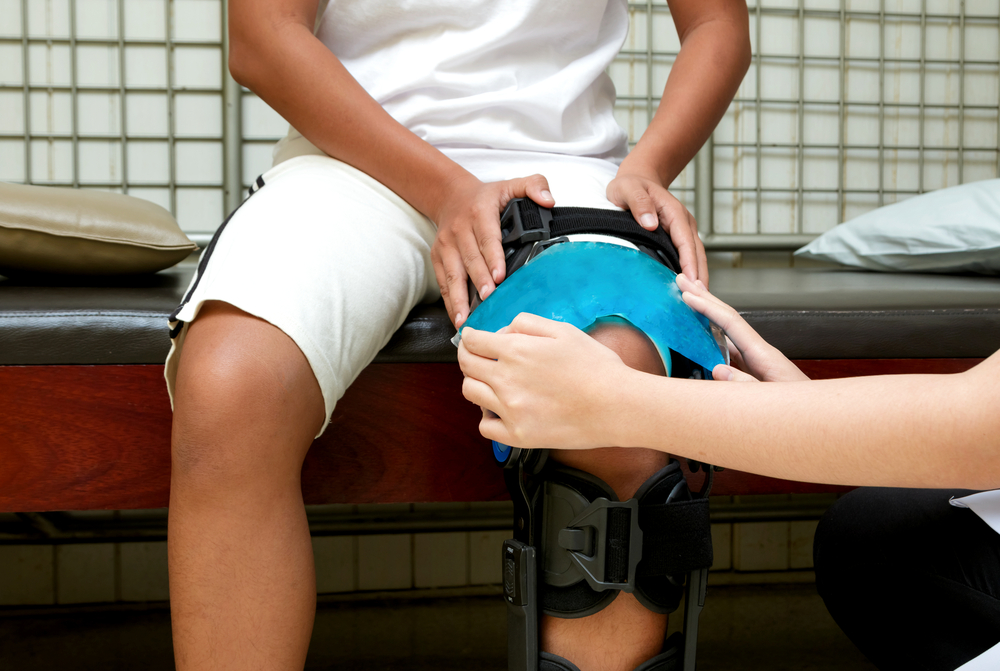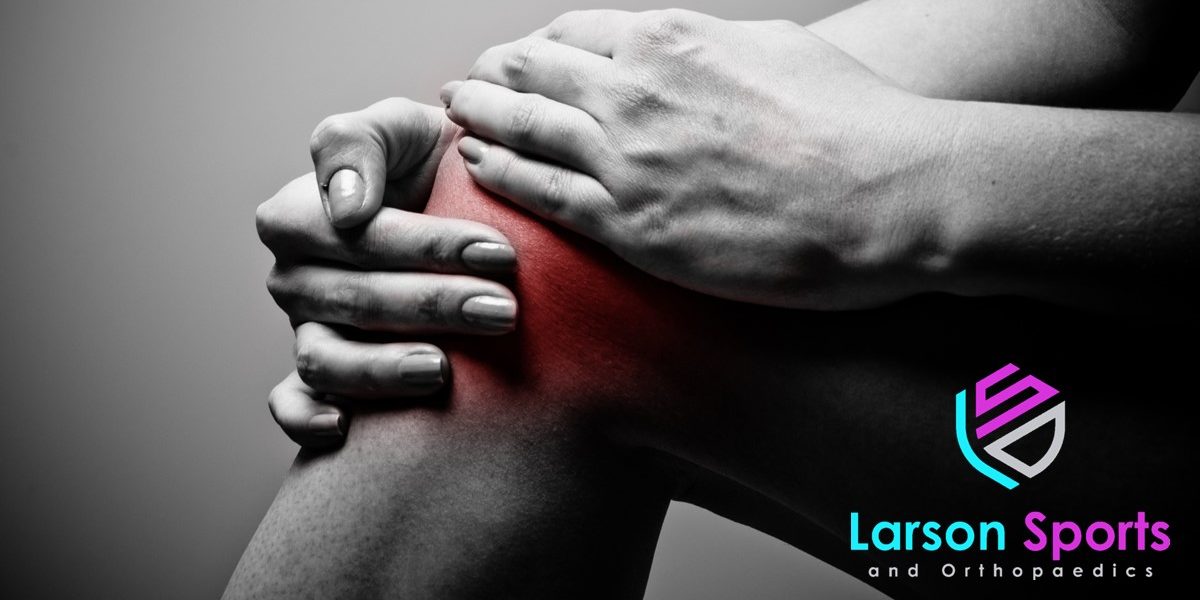As an orthopedic surgeon that specializes in sports injuries and safe weight training, I treat many cases of knee pain from working out. Sometimes my patients have a new injury that happens while working out. But more often, they have a chronic injury that only starts acting up again from the activity. Of course, the other major source of knee problems from working out is overuse injuries.
I always think it’s best to address the source of pain and get on with an active lifestyle! The worst thing you can do is retire back to the couch and start working on those metabolic diseases from inactivity. You don’t have to stop living healthy just because you have one knee that’s not on board with the plan. So in this post, we will talk about all sorts of problems that may cause your knee to hurt while exercising.
Common Causes of Knee Pain From Working Out
Knee Tendinitis
The most common causes of knee pain when lifting are different kinds of tendinitis including:
- Patellar Tendinitis
- Quad Tendinitis
These two problems cause pain in the front of the knee. The quad tendon is above your kneecap, and the patellar tendon is below the kneecap. Quad or Patellar Tendinitis will usually cause sharp pain when you push with your legs or jump. They will hurt with squats, box jumps, and running. The top or bottom of the kneecap may be painful to push on. You often have mild swelling that makes it hard to see the outline of the kneecap.
Wear and Tear of Your Knee
Other common causes of knee pain when lifting include damage to the interior of the joint like:
- Chondromalacia
- Arthritis
- Stress Fractures
- Osteochondritis Dessicans (OCD)
These are the most common causes of knee pain from working out. Chondrosis and Arthritis are just different stages of the same problem: damage to the cartilage lining the joint surface. We call it chondromalacia or chondrosis when the cartilage is just damaged. We call it arthritis when the cartilage is gone. They both cause aching, swelling, and crepitus in the knee. Crepitus is the official term for that sound of rice crispies or velcro crunching in your knees when you squat. My wife can’t stand the sound of my knees when we work out; that’s why she keeps the music loud! If your knees are noisy but not painful, it’s okay to ignore the noise. Noisy AND painful though? You might wanna get that checked out.
Stress fractures are uncommon and usually involve the shin bone. Stress fractures are more frequent in runners and can hurt all the way up to the knee. OCD is a particular kind of stress fracture that occurs in kids, just below the surface of the bone and cartilage. It causes aching and pain in the knee of young athletes. And it can cause a catching or clunking feeling in the knee if the cartilage starts to break loose.

Acute Knee Injuries
- ACL Tears
- Loose Cartilage
- Meniscus Tear
- Quadriceps Rupture
- Patellar Tendon Rupture
You’ll know immediately if you tear your Quad or Patellar tendons. Your knee gives out and you hit the floor. You won’t be able to walk, stand, or lift your foot away from the floor. I’ve had a couple of poor patients that popped both quads while doing back squats. One had been having symptoms of tendinitis for a long time. Which reminds me: Don’t ignore your body’s warning signs!
ACL tears are very common in team sports, but not when weightlifting. The rare occasions when a lifter tears an ACL are when they let the knee drift in while performing the “jerk” of the clean and jerk. And many of us have seen the horrific knee injuries that can occur on the leg-press machine. That kind of injury is more than just an ACL! (If you haven’t seen them, trust me, don’t Google it.)
Other problems include loose bits of cartilage or tears of the meniscus. These can happen when jumping, squatting, doing burpees, or rowing. You will usually feel a pop or crunch and the loose piece of tissue may block your knee from moving. Swelling can be pretty bad, and you may feel like your knee is stuck in one position. But I’ve also seen some meniscal tears and cartilage injuries that feel fine with normal activities and only hurt when exercising.
The Wierd Ones
- Plica Syndrome
- Prepatellar Bursitis
Plica syndrome is a fairly common problem amongst active people. This is a situation where a fold of tissue on the inside of the knee becomes irritated and starts to cause problems. This plica band arcs across the inner side of the knee and over the patella. It can get thickened and develop adhesions when injured. After that happens, it can start to clunk and pop when you straighten your knee from a bent position. The lining of your joint is a lot like the lining of your mouth. You know how when you bite your cheek, it will swell and then you bite it five more times that day? The same sort of thing happens in your knee with plica syndrome.
Bursitis at the knee usually looks like a big bubble under the skin. It can be small and round, like an egg under the skin. Or it can be vague and blobby; this kind will jiggle when you poke at it. (What?! Stop laughing, everyone pokes at these!) This is usually caused by your knees rubbing against pads or floor mats when exercising. It usually helps to wear a knee sleeve for protection and compression.

Treating Knee Pain From Working Out
Hopefully, now you have some idea of WHY you have knee pain from working out. Now for the important part: how to stop it from hurting! Most of the time, simple remedies stop knee pain while lifting. These treatments work best early, though. It is important to address your knee pain before it becomes a bigger issue. Some simple things you can do to stop your knee pain during exercise include:
- Change Your Workout
- Brace The Knee
- Apply Heat
- Stretch
- Try Eccentric Strengthening
Change Your Workout To Treat Knee Pain
This is one of the best ways to stop knee pain from working out. You can’t heal in the same environment that got you injured. If you don’t change your program, you can’t possibly start improving!
1- Reduce your reps. The first step toward recovery is to give your body a chance to heal. Doing more than ten sets per muscle group each week actually decreases your strength gains and sets you up for injuries. Stay below that number!
2- Reduce your weight load to a level that doesn’t hurt. And stop doing lifts that hurt. You can still do exercises that don’t cause pain. But try, for once, to not be the Type A person that ignores pain because you aren’t sure whether it would be worse to have a major injury or have nothing wrong and be “crazy.” (Didn’t think I knew about that, did you? Trust me, I understand you!)
3- Try squatting with different foot positions. It might fix your angles! Just because your coach thinks everyone’s toes have to be at a 30-degree angle to your body doesn’t make it right for everybody.
4- Have a coach analyze your movements. Even experienced lifters may not notice when their body is not moving optimally.
5- And switch to lower impact activity. If box jumps are killing you, switch to box step-ups!
Brace The Knee
Using knee sleeves or braces can provide compression, support, and warmth for injured knees. Warm knees move better and have more flexibility. It also increases blood flow for healing. Compression decreases swelling. And it can provide structural support to relieve the stress on the injured parts of your knee. A patellar tendon strap like this can really help relieve the pain of tendinitis and let you keep that tendon quiet while you continue to punish it… seriously though, rest the injured area a bit too!
I’ve got some damaged cartilage behind my kneecap. And I found that it helped a lot to wear neoprene knee sleeves when I was getting back into the gym after a few years off. Now my legs are strong enough that I don’t need to wear them anymore. But I always liked something like these.

Apply Moist Heat for Pain
No matter what the cause of knee pain, ice will help it feel better for a while. So icing can be very helpful after a workout or other heavy activity. But you should use heat BEFORE a workout. That will help to get the joint limber and moving well. If you’d like to know more about the debate on heat vs ice, read our previous post “Ice or Heat: Strategies for Treating Delayed Onset Muscle Soreness”.
Stretch the Leg and Thigh
Stretching is a great way to relieve pain in just about any joint and that applies to the knee too. Couch stretches are a great way to stretch the quads and hip flexors. These muscles get super tight during all our time at a desk and in the car and contribute to poor lower body mechanics. Of course, hamstring stretching is very important too. Mobility work like this keeps the joint loose, helps decrease tendinitis, and reduces joint stress. Stretching can help reduce the perception of pain at a joint, so it can be helpful even for cases of arthritis.
Eccentric Strengthening
This is a specific remedy for tendinitis. Eccentric strength training is where you slowly resist a force working against you. When doing eccentrics for knee pain, one of the best ways is with squats. Use a narrow stance, and keep the feet just inside shoulder-width. Keep the toes pointing forward, to help target the quad and patellar tendons. Use a very low weight (half to one-third of your normal squat weight.) This targets the quads and tendons of the knee. But be sure you only have tendinitis before starting this. It could make other problems worse!
When to see a doctor about your knee pain
There are three main indications to check with your doctor or therapist: if the pain won’t go away after a few weeks, if you can’t walk, or if you are having severe pain and swelling. That way you can get a proper diagnosis and be sure of exactly what you should do to fix it. Some problems, like tendinitis, may take up to 6 months to get completely better. Some, like meniscus tears, may need surgery. And others, like arthritis, may need further management like injections.
If you live in Maryland, Virginia, or West Virginia and have persistent problems with your knee pain while lifting please call my office for an evaluation and treatment!
disclaimer: This post does contain affiliate links to products. That doesn’t increase the cost to you for any of these items, but our site will get a small commission on the item if you do purchase something. We do not sell any of the products directly. If you do make a purchase, I’d like to thank you for helping us fulfill our mission to keep more people moving better, longer.

